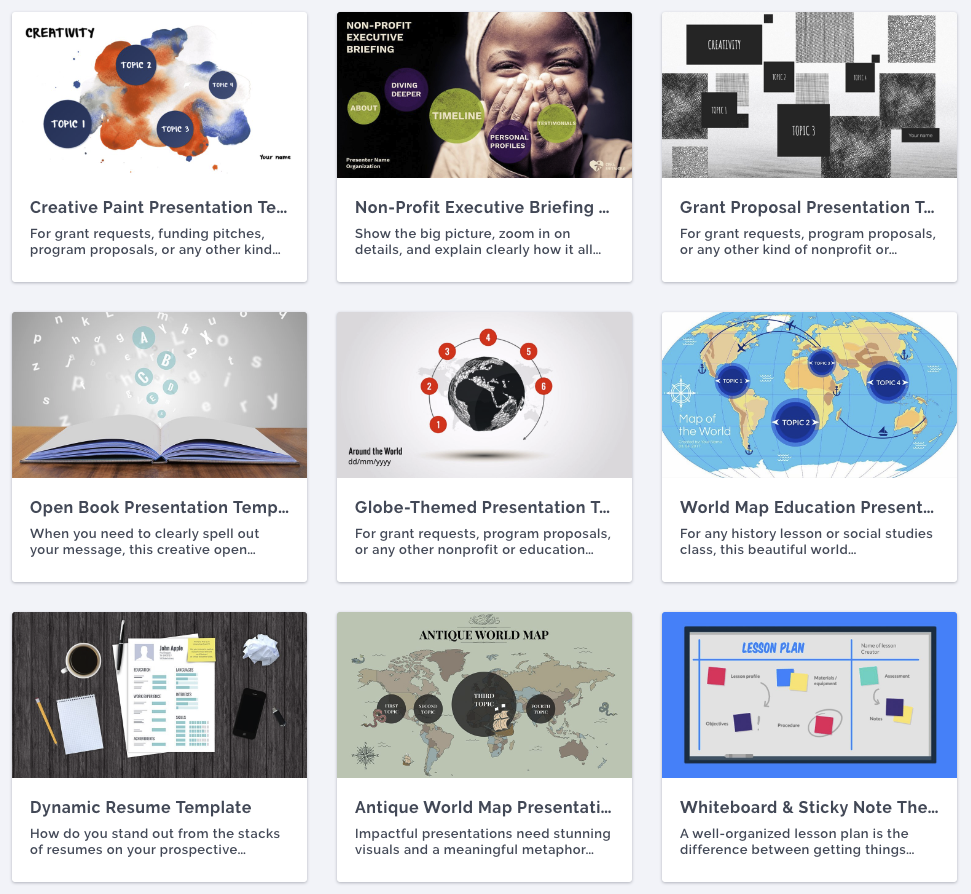Delivering presentations with a partner can be challenging as it requires synchronizing with them, balancing speaking time, and ensuring a smooth flow. However, with proper preparation and practice, co-presenting can be a highly effective way to engage and inform your audience. Co presenting can also be fun and engaging, as it allows you to showcase different perspectives, share ideas, and build on each other’s strengths.
One key benefit of co presenting is the ability to divide the workload and responsibilities among multiple presenters. This allows for a more efficient and effective presentation. It can also result in a more engaging and dynamic presentation, as each presenter can bring their unique perspectives and expertise to the table. Additionally, co presenting can make it easier and less nerve-wracking than presenting alone. It can also provide support and backup for each other during the presentation. Overall, co presenting can lead to a more polished, collaborative and successful presentation.
In this article, we’ll discuss co-presenting tips to help you deliver an engaging and cohesive presentation. Whether you’re presenting with a colleague, friend, or partner, these tips will help you work seamlessly and deliver an impactful presentation.

What is Co-Presenting?
Co presenting is a term used to describe a situation where two or more people present a topic or subject matter to an audience. It’s common in business, education, and public speaking, and is often used to showcase different perspectives, share ideas, and build on each other’s strengths.
Co presenting requires a high level of coordination and cooperation between the presenters. Each presenter must work seamlessly with the other to ensure that the co presentation is cohesive and engaging. This is why Prezi Present is an asset to your co presentations. Prezi Present’s open canvas feature can aid in delivering an exceptional co-presentation by offering a comprehensive view of the entire presentation. With the freedom to move between topics in real-time, presenters can emphasize vital information with precision, keeping the audience engaged. Co-presenters can work together effortlessly, using the open canvas feature to create an impactful presentation that delivers the intended message effectively.
Being comfortable with co-presenting is a valuable skill to possess as it fosters more successful and cooperative presentations. In many business and educational settings, presentations require input and collaboration from multiple individuals with different expertise and experiences. By being comfortable with co presenting, you can better work with others to divide the workload, share the responsibility of presenting, and make use of each other’s strengths to create a more engaging and informative presentation. Additionally, co presenting allows for constructive feedback and support from your co-presenters, which can help you improve your presentation skills and boost your confidence.

Explore five ways of co-presenting
Simultaneous co-presenting
Simultaneous co-presenting is when two or more presenters work together to deliver a presentation in real time. Each presenter takes turns speaking while the others may assist by operating visual aids or providing additional commentary.
This type of presentation delivery also has numerous advantages that can benefit both presenters and audiences. One of the most significant advantages of simultaneous co-presenting is enhanced engagement. With multiple presenters working together to deliver content in real time, there is a greater chance of capturing and maintaining audience attention throughout the presentation. Check out a Prezi presentation example below that can easily be used for this type of delivery.
Author: Lydia Antonatos
Sequential co-presenting
In this format, each presenter takes turns presenting a segment of the content, often separated by specific topics or themes. The presenters may provide additional insights or feedback on each other’s segments, but each is responsible for delivering their content independently.
This form of co presenting allows presenters to delve into specific topics or themes in greater detail, as each presenter can focus on a specific area of the content. It also ensures that each presenter has adequate time to prepare and deliver their segment, reducing the risk of errors or miscommunications.
When designing a presentation for this type of delivery, check out Prezi’s presentation templates and examples that can be perfect for this presentation form. With open canvas and zooming effects, you can choose to zoom in and out of topics in whatever order you want. Check out one of the examples below.
Author: Gretchen Rubin
Tag team co-presenting
This form of co-presentation involves presenters working together in pairs or small groups. One presenter can introduce the topic and the other(s) provide additional insights or examples to support the presentation. What’s more, this format can add variety and dynamism to the presentation, as presenters can switch roles and add their own personal touches to the presentation.
The Prezi presentation template below is perfect for tag team co-presenting as you can easily navigate through the presentation topics and subtopics, and go into detail where necessary by zooming into specific areas on the canvas.
Author: NOBL Collective
Expert co-presenting
This format involves one presenter serving as the primary expert on the topic, with other presenters providing additional commentary or insights that complement the expert’s content.
This form of presenting can be especially valuable for complex or technical topics where multiple perspectives are needed to fully understand the material. Additionally, expert co-presenting can help build credibility and authority with the audience, as the collective expertise of the presenters can instill confidence and trust in the material being presented.
The Prezi presentation example below showcases how you can structure your presentation for this presentation delivery style.
Author: Jan Rezab
Panel discussion co-presenting
Panel discussion co-presenting is often used in conferences or public events, where a panel of presenters is assembled to discuss a specific topic. Each presenter may deliver a brief presentation, followed by a discussion or debate on the topic moderated by a host or facilitator.
This form can help build a sense of community and collaboration among presenters and audiences alike, as everyone is invited to participate and contribute to the discussion.
To create this type of presentation format, check out the Prezi presentation template below and re-create it for your topic.
Author: Monserrat Molina
Co-presenting tips
Plan and prepare together
The key to successful co presenting is planning and preparation. The presenters must plan and prepare the presentation together to ensure that they are on the same page and that the co presentation flows smoothly.
Before the presentation, the co-presenters should discuss the following:
- The purpose of the presentation.
- The target audience.
- The main points to be covered.
- The roles and responsibilities of each co presenter.
- The presentation formats.
By planning and preparing together, the co-presenters can ensure that they are aligned and that the presentation is structured and coherent.
Assign roles and responsibilities
To ensure that co presenting runs smoothly, it’s essential to assign roles and responsibilities to each presenter. Each presenter should have a specific role to play, whether it’s introducing the topic, presenting the main points, or concluding the presentation.
Assigning roles and responsibilities can help to:
- Ensure that each presenter has a clear understanding of their role.
- Ensure that the presentation flows seamlessly.
- Prevent two or more presenters from speaking at the same time.
- Allow each presenter to showcase their strengths.

Practice is key
Practice is essential when co-presenting. The presenters should rehearse the presentation together several times to ensure that they are synchronized and that the presentation progresses with ease.
During the practice sessions, the presenters should focus on the following:
- The timing of each segment of the presentation.
- The transitions between each segment.
- The delivery of each co-presenter (e.g., tone, pace, volume).
Practice sessions should be conducted in a quiet and distraction-free environment. Also, the presenters should be open to feedback and suggestions from each other. Feedback can help build trust and collaboration among presenters, as they work together to create the best possible presentation. By listening to each other’s feedback and incorporating suggestions, presenters can create a more cohesive and effective presentation.
Use visual aids
Visual aids are a powerful tool for engaging audiences and simplifying complex information. With Prezi and Prezi Video (for online meetings and presentations), you can take your co presenting to the next level by adding stunning, real-time visuals that captivate and inspire your viewers. Co-presenters can collaborate seamlessly, creating an immersive experience that seamlessly integrates their words with the visuals.
Using visual aids when co-presenting helps to:
- Break up the presentation into manageable chunks.
- Reinforce key points.
- Provide a visual representation of complex information.
- Add interest and variety to the presentation.

Engage the audience
Co-presenters should work together to engage the audience in new and interesting ways. This can include asking questions, using humor, or incorporating interactive elements such as charts or polls. Engaging the audience during a co-presentation is important because it helps to keep their attention focused on the presentation and increases their interest and understanding of the topic being presented. When audience members are engaged, they are more likely to retain the information being presented, as well as be more receptive to the ideas being conveyed.
Maintain consistency
It’s important to maintain consistency throughout the presentation, including style, tone, and pacing. Co-presenters should work together to ensure that the presentation feels cohesive and seamless. It’s important to remain consistent during a co-presentation because inconsistency can create confusion and undermine the effectiveness of the presentation. When working together, use the best presentation design practices that we describe in the following video:
Be prepared for the unexpected
Co-presenting can be unpredictable, so it’s important to be prepared for unexpected events such as technical difficulties or questions from the audience. Co-presenters should work together to develop a plan for addressing these situations. By preparing for the unexpected, presenters can maintain their composure and continue to deliver an effective presentation, even in challenging or unexpected circumstances. Additionally, being prepared for unexpected situations can help you build credibility and trust with the audience. It demonstrates that the presenters are professional, adaptable, and able to handle unexpected challenges with ease.
Handle conflicts gracefully
Co-presenting can be a rewarding experience if executed correctly. But unfortunately, sometimes that does not always go to plan. Sometimes there are disagreements or conflicts between presenters. To ensure a smooth and effective presentation, it’s important to handle conflicts gracefully.
Here are some tips for handling conflicts:
Listen actively: When a conflict arises, listen to the other presenter’s perspective without interrupting. Active listening can help you understand the other presenter’s point of view and find common ground.
Express your own perspective calmly: When expressing your own perspective, avoid attacking or blaming the other presenter. Instead, focus on explaining your own viewpoint and how it can benefit the presentation.
Compromise: When there are disagreements, try to find a compromise that works for both presenters. Look for solutions that can meet both presenters’ needs and still achieve the goals of the presentation.
Take a break if necessary: If conflicts become too heated, take a break and step away from the situation. Give yourself time to cool down and gather your thoughts, and then return to the discussion with a fresh perspective.
Apologize when needed: If you realize that you have made a mistake or reacted poorly during a conflict, take responsibility for your actions and apologize. This can help rebuild trust and collaboration between co-presenters.
By handling conflicts gracefully, co-presenters can maintain a positive and collaborative working relationship. This can ultimately lead to a more successful presentation.

Manage non-verbal communication
Non-verbal communication can greatly affect the impact the presentation has on the audience. Co-presenters should pay attention to their body language, eye contact, and facial expressions to ensure they send the right message to the audience. Practicing active listening skills can help co-presenters to understand each other’s perspectives better and avoid countering your co presenters’ narrative.
By managing non-verbal communication, co-presenters can create a positive and engaging environment for the audience. This can help them to better understand and retain the information being presented. Effective non-verbal communication feeds the mood to the audience before any information has been presented. This allows the audience to view the co presenters as impactful individuals, leading to a hard-hitting presentation.
For more tips on non-verbal communication and body language skills, watch the following video:
Streamline your co-presenting with Prezi
In conclusion, co-presenting can be a highly effective way to engage audiences and deliver compelling presentations. However, it can also be a challenging experience, requiring careful planning and coordination between presenters. That’s where Prezi comes in – with its range of innovative presentation tools, Prezi can help ease the stresses of co-presenting and make creating engaging and impactful presentations a stress-free and exciting experience.
The unique open canvas feature of Prezi Present allows the viewing of your presentation as a cohesive whole. With the freedom to move seamlessly between topics and the ability to zoom in on pertinent details in real-time, Prezi empowers you to highlight critical information with precision and impact. And with Prezi Video, you can easily bring your words to life even in the limiting online space. By following the tips provided and using Prezi, co-presenters can work together to create the best possible presentation and deliver a memorable and engaging experience for their audience.
